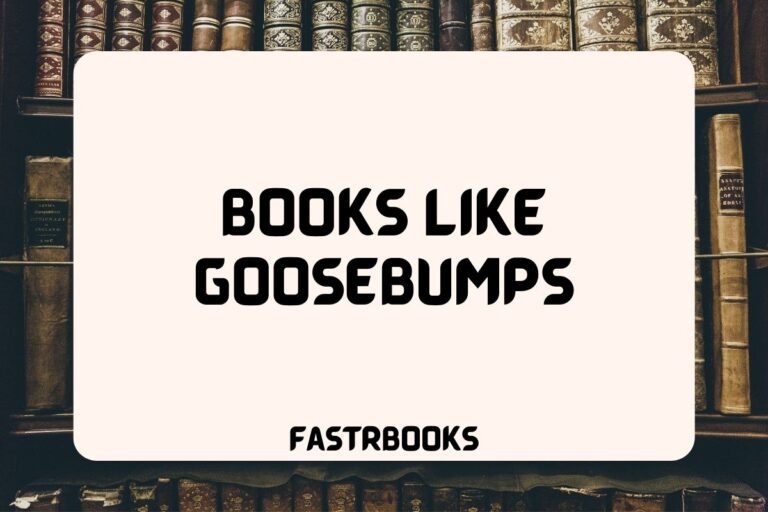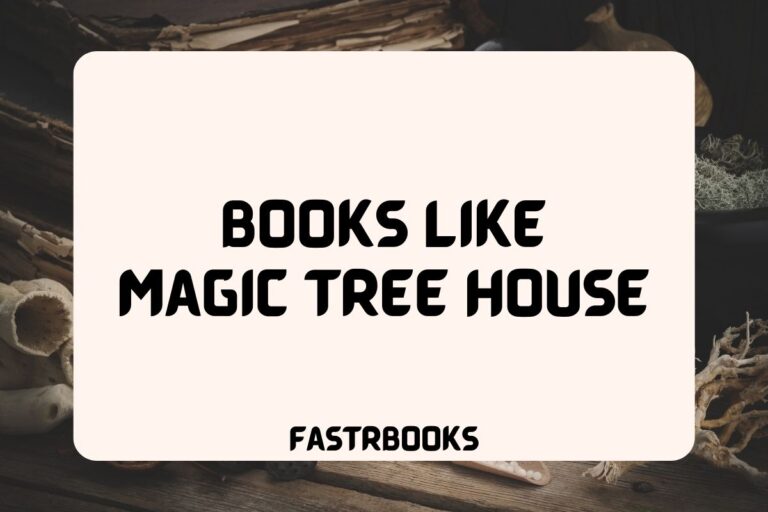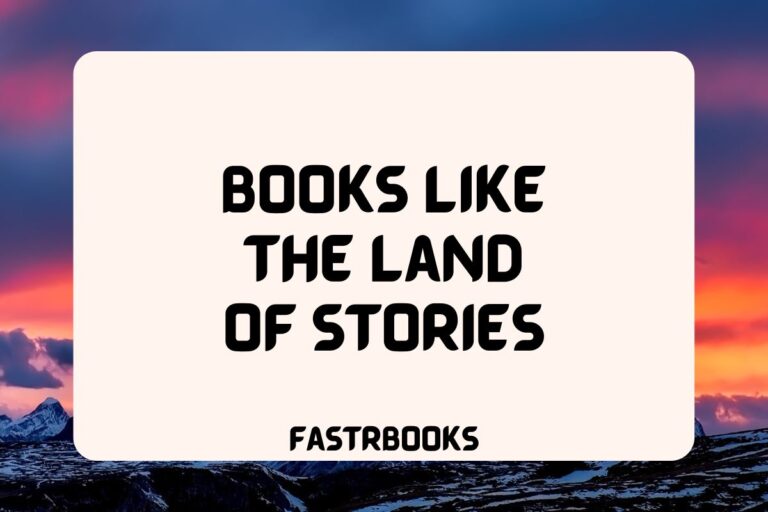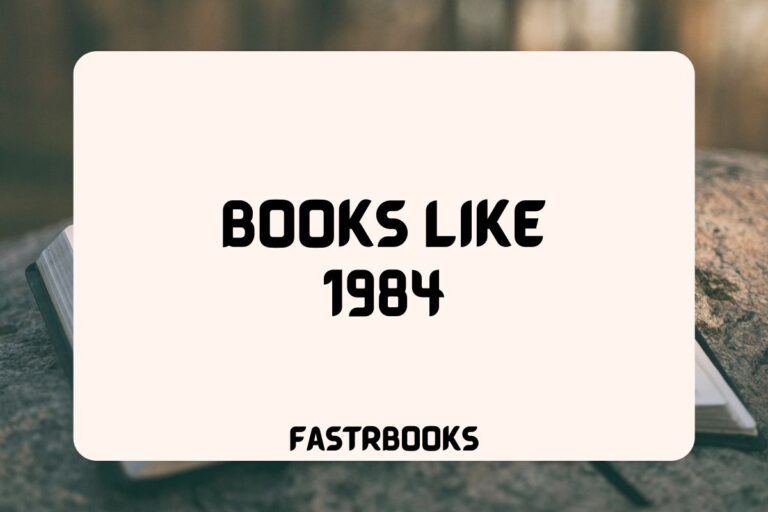24 Books like The Giver

Diving into the realm of dystopian literature makes us question the very essence of society.
At the forefront of this genre stands Lois Lowry’s iconic novel, “The Giver,” which has captivated bibliophiles like you and me with its hauntingly beautiful portrayal of a seemingly utopian society masking darker truths.
As we embark on a journey through the literary landscape, let’s explore some amazing books that share thematic resonance with “The Giver,” inviting readers into worlds of introspection, rebellion, and the pursuit of individuality amidst oppressive regimes.
Books like The Giver
1. “Brave New World” by Aldous Huxley
“Brave New World” is a pioneering work of dystopian fiction that envisions a future society organized by scientific methods of conditioning and control. Set in the year 2540, it depicts a world where human beings are bred in laboratories and assigned to castes based on their predestined abilities and functions. Happiness is mandated through the use of a drug called soma, and the concepts of family, religion, and art are considered obsolete.
Major Similarities: Like “The Giver,” “Brave New World” explores themes of control, conformity, and the loss of individuality in a highly regulated society. Both novels question the cost of societal stability and the suppression of emotions and desires for the sake of harmony.
2. “1984” by George Orwell
George Orwell’s “1984” is a seminal work that introduced the world to the concept of Big Brother and a society under constant surveillance. The story follows Winston Smith, a man living in a totalitarian regime where the government controls every aspect of life, including history, language, and even thought. Rebellion against the state is punishable by death, but Winston dares to seek truth and freedom.
Major Similarities: Both “1984” and “The Giver” deal with themes of surveillance, government control, and the erasure of past memories to create a compliant society. Each novel features a protagonist who becomes aware of the lies fed by the society and struggles to break free from its constraints.
3. “Fahrenheit 451” by Ray Bradbury
“Fahrenheit 451” is set in a future America where books are banned and “firemen” burn any that are found. The narrative follows Guy Montag, a fireman who becomes disillusioned with his role in suppressing knowledge and begins to seek enlightenment through the very books he is supposed to destroy. This quest puts him at odds with his society and ultimately leads him to seek a way to change it.
Major Similarities: Like “The Giver,” “Fahrenheit 451” explores the themes of censorship, the suppression of knowledge, and the quest for truth in a society that has outlawed it. Both books highlight the importance of memory and history in shaping individual identity and resisting conformity.
4. “Divergent” by Veronica Roth
“Divergent” is a young adult novel set in a dystopian Chicago where society is divided into five factions, each dedicated to the cultivation of a particular virtue. The protagonist, Tris Prior, discovers she is Divergent, meaning she does not fit into any one faction, and uncovers a conspiracy to destroy all Divergents. Tris must navigate the dangers of her society to survive and protect those she loves.
Major Similarities: Both “Divergent” and “The Giver” feature societies with strict roles and expectations for their citizens, and protagonists who do not fit into the predefined molds. Themes of rebellion, choice, and the discovery of one’s true self are central to both stories.
5. “The Maze Runner” by James Dashner
In “The Maze Runner,” a group of teenagers, including the protagonist Thomas, wake up in a mysterious place called the Glade with no memory of their past. Surrounded by a gigantic maze, they must work together to find a way out while facing various dangers. As Thomas’s memories slowly return, he realizes that there is more at stake than just their escape.
Major Similarities: Similar to “The Giver,” “The Maze Runner” deals with themes of memory loss, the search for truth, and the fight against a controlling power. Both novels feature young protagonists who challenge the status quo and seek to uncover the secrets of their societies.
6. “Matched” by Ally Condie
“Matched” takes place in a society where the Officials decide everything for its citizens, including what they eat, what they read, and whom they marry. Cassia Reyes is matched with her best friend Xander but accidentally discovers there was a mistake, and another boy’s face flashes on the screen. This leads Cassia to question the infallibility of the society’s choices and to explore the path of love and free will.
Major Similarities: Like “The Giver,” “Matched” explores a society that controls every aspect of its citizens’ lives, including emotions and relationships. Both novels feature protagonists who begin to question the rules of their worlds and the true meaning of freedom and happiness.
7. “The Hunger Games” by Suzanne Collins
“The Hunger Games” is set in Panem, a dystopian future where the Capitol forces each of its twelve districts to send a boy and a girl to compete in a televised death match. Katniss Everdeen volunteers to save her sister from this fate and becomes a symbol of rebellion against the oppressive regime. The novel explores themes of survival, tyranny, and resistance.
Major Similarities: Both “The Hunger Games” and “The Giver” depict societies where the government exerts extreme control over its citizens, including children. Themes of sacrifice, resistance, and the moral complexities of survival and freedom are prevalent in both narratives.
8. “Legend” by Marie Lu
“Legend” takes place in a dystopian Los Angeles, where the United States has split into two warring nations. The story is told from the perspectives of two teenagers from very different backgrounds: June, a military prodigy from a wealthy district, and Day, the country’s most wanted criminal. Their paths cross when June’s brother is murdered, and Day becomes the prime suspect, setting off a chain of events that reveals the dark secrets of their society.
Major Similarities: “Legend” and “The Giver” both explore themes of government oppression, the quest for truth, and the impact of societal roles on personal identity. Each story features young protagonists who confront and challenge the injustices of their worlds.
9. “The City of Ember” by Jeanne DuPrau
“The City of Ember” tells the story of an underground city built as a last refuge for the human race. Two hundred years later, the city’s supplies are dwindling, and its lights are starting to flicker. Two teenagers, Lina and Doon, discover clues that might lead them to the outside world they’ve never seen, embarking on a quest to save their city.
Major Similarities: Similar to “The Giver,” “The City of Ember” deals with a society isolated from the outside world and the discovery of hidden truths that could change everything. Both novels focus on young protagonists who take on the responsibility to uncover the past and forge a new future.
10. “Unwind” by Neal Shusterman
“Unwind” is set in a future America where children between the ages of thirteen and eighteen can be “unwound,” their organs harvested for use by others. The novel follows three teenagers who are slated for unwinding but decide to fight back and escape their fates. It explores themes of bodily autonomy, societal values, and the meaning of life.
Major Similarities: Like “The Giver,” “Unwind” presents a society with disturbing practices that are accepted as normal, and it questions the morality of sacrificing individuals for the supposed greater good. Both books feature young characters who must make difficult choices in their quests for freedom and identity.
11. “Delirium” by Lauren Oliver
In “Delirium,” love is considered a disease, and at the age of eighteen, everyone must undergo a procedure to cure them of the ability to love. Lena looks forward to the procedure until she falls in love with Alex, a boy who lives outside the society’s norms. This love forces her to question everything she has been taught and to consider the price of freedom and happiness.
Major Similarities: “Delirium” and “The Giver” both explore a world where emotions are regulated by the government, and conformity is enforced. The protagonists in both novels awaken to the depth of their feelings and the oppressive nature of their societies, leading them to challenge the status quo.
12. “Gathering Blue” by Lois Lowry
A companion novel to “The Giver,” “Gathering Blue” follows Kira, a young girl with a disability who lives in a society where the weak are cast aside. When Kira is orphaned, she is taken in by the Council of Guardians because of her skill in embroidery. As she works on maintaining the history of her people through her art, she begins to uncover truths about her community and its leaders.
Major Similarities: “Gathering Blue” continues the exploration of dystopian themes seen in “The Giver,” such as societal control, the role of memory and history, and the struggle of individuals to find their place and voice within oppressive structures. Both novels highlight the power of the individual in challenging societal norms and envisioning change.
13. “Uglies” by Scott Westerfeld
“Uglies” is set in a future world where everyone undergoes surgery at sixteen to become “pretty” by societal standards. Tally Youngblood is eager for her transformation until she meets Shay, who plans to escape to a community outside the city where people remain “ugly.” Tally is then forced into a dilemma: find her friend and turn her in, or never become pretty herself.
Major Similarities: Both “Uglies” and “The Giver” critique societal standards of conformity, the manipulation of populations through systemic controls, and the loss of personal freedom. The protagonists face moral and ethical dilemmas that challenge the foundations of their worlds and encourage readers to question the value of conformity versus individuality.
14. “The Handmaid’s Tale” by Margaret Atwood
“The Handmaid’s Tale” is set in the dystopian future of the Republic of Gilead, where a theocratic regime has taken control in response to declining birth rates. Women are stripped of their rights and forced into roles that serve the state, with the protagonist, Offred, serving as a Handmaid tasked with bearing children for the elite. The novel explores themes of power, gender dynamics, and resistance.
Major Similarities: Like “The Giver,” “The Handmaid’s Tale” presents a society with rigid roles assigned to individuals, stripping them of their past identities and freedoms. Both novels explore the effects of governmental control over personal lives and the acts of resistance that can emerge from such oppression.
15. “Station Eleven” by Emily St. John Mandel
“Station Eleven” spans multiple timelines before and after a devastating flu pandemic wipes out much of the world’s population. The story follows a traveling symphony that performs Shakespearean plays for the scattered settlements of survivors. Through interconnected narratives, the novel explores themes of memory, loss, and the enduring power of art and humanity in the face of collapse.
Major Similarities: Although “Station Eleven” deals with a post-apocalyptic rather than a strictly dystopian setting, it shares with “The Giver” a deep concern for memory, history, and the role of culture in maintaining human connections and identity. Both novels underscore the importance of storytelling and the arts as means of understanding and resisting oppressive environments.
16. “Never Let Me Go” by Kazuo Ishiguro
“Never Let Me Go” is a haunting tale set in a parallel England, where children are cloned and raised to be organ donors. The story, narrated by Kathy, now a caretaker, reflects on her childhood at Hailsham, a seemingly idyllic boarding school, and the deep bonds she forms with her friends Ruth and Tommy. As they grow older, they must come to terms with the grim reality of their existence.
Major Similarities: This novel shares with “The Giver” a profound exploration of youth, the loss of innocence, and the slow unveiling of a disturbing underlying truth about the society in which they live. Both stories question the ethics of sacrificing individuals for the supposed greater good and the power of human connections in the face of bleak realities.
17. “The Road” by Cormac McCarthy
“The Road” follows a father and his young son as they traverse a post-apocalyptic landscape, aiming for the coast in the hopes of finding a warmer climate and safety. The world they navigate is bleak and ash-covered, with the remnants of civilization gone and survivors turning to desperation and cannibalism. Their journey is one of survival, love, and the quest for a shred of hope in a desolate world.
Major Similarities: While “The Road” is more of a post-apocalyptic narrative compared to the dystopian setting of “The Giver,” both novels deeply explore themes of love, survival, and the choices that must be made in extreme circumstances. The emphasis on the human spirit and the relationship between the characters echoes the bond between Jonas and The Giver, highlighting the importance of human connection and the hope it brings.
18. “The Knife of Never Letting Go” by Patrick Ness
In “The Knife of Never Letting Go,” everyone can hear everyone else’s thoughts in a constant, overwhelming Noise. Young Todd Hewitt discovers a spot of silence, which is impossible in his world, leading him to uncover a terrible secret that forces him to flee his town. Along the way, he encounters a girl who is key to the mystery surrounding their planet.
Major Similarities: Similar to “The Giver,” this novel explores the concept of thoughts and memories being accessible or controlled, and the journey of a young protagonist who seeks the truth behind his society’s façade. Both novels delve into themes of tyranny, the search for freedom, and the courage to challenge what is presented as the norm.
19. “A Wrinkle in Time” by Madeleine L’Engle
“A Wrinkle in Time” is a science fiction and fantasy novel that follows Meg Murry, her brother Charles Wallace, and their friend Calvin O’Keefe as they embark on a journey across dimensions to save Meg’s father from an evil force. The novel blends elements of science and spirituality, exploring themes of good versus evil, the power of love, and the importance of individuality.
Major Similarities: Like “The Giver,” “A Wrinkle in Time” involves young protagonists who confront and overcome oppressive forces with the help of mentors. Both novels address the significance of individual thought and the fight against the homogenization of society, emphasizing the value of diversity and freedom of choice.
20. “Pretties” by Scott Westerfeld
The sequel to “Uglies,” “Pretties” continues to explore the world where society values beauty above all else, and teens undergo surgery to become ‘pretty’. Tally Youngblood, now transformed into a Pretty, begins to uncover the truth behind the surgery’s real purpose and the brain alterations it involves, leading her to question the cost of conformity and the value of true beauty and identity.
Major Similarities: Both “Pretties” and “The Giver” deal with societies that prioritize conformity and control over individuality and freedom. The protagonists in both stories undergo significant personal growth as they uncover the truth about their worlds, challenging the status quo and seeking to bring about change.
21. “Specials” by Scott Westerfeld
In the third installment of the “Uglies” series, “Specials” sees Tally Youngblood becoming a part of the elite enforcement arm of the society. Enhanced physically and mentally, Tally now views the world differently, but her mission to maintain order and conformity in the city brings her face to face with her past and the consequences of her actions, pushing her to make a final stand for freedom and individuality.
Major Similarities: “Specials” and “The Giver” both examine the effects of societal control at an even deeper level, with protagonists who have been conditioned to enforce the very rules they once questioned. Themes of resistance, redemption, and the quest for true freedom are key components of both narratives.
22. “The Host” by Stephenie Meyer
“The Host” explores a future where Earth has been invaded by an alien species that takes over the minds of human hosts while leaving their bodies intact. The story follows Wanderer, an alien who has been given the body of Melanie Stryder, a human who refuses to relinquish her consciousness. As Wanderer delves into Melanie’s memories, she begins to question her species’ invasion and forms deep bonds with the humans.
Major Similarities: Like “The Giver,” “The Host” delves into themes of identity, consciousness, and the struggle between societal control and individual freedom. Both novels explore the complexities of human emotions and relationships in the face of oppressive circumstances.
23. “Insurgent” by Veronica Roth
The sequel to “Divergent,” “Insurgent” continues the story of Tris Prior as she navigates the aftermath of the faction system’s collapse. Faced with escalating conflict and the revelation of new truths about her society, Tris must decide whom to trust as she fights to protect her loved ones and uncover the secrets of her world. The novel explores themes of power, sacrifice, and identity.
Major Similarities: “Insurgent” and “The Giver” both feature protagonists who grapple with the revelations about the true nature of their societies and the implications of their newfound knowledge. Themes of rebellion, choice, and the pursuit of freedom against the backdrop of a controlling government are central to both stories.
24. “Allegiant” by Veronica Roth
In “Allegiant,” the final installment of the “Divergent” series, Tris and Four venture outside the confines of their city for the first time. What they discover is a society that complicates everything they have learned about their world. As they face new truths and the moral complexities of their actions, they must make difficult choices about loyalty, love, and sacrifice.
Major Similarities: “Allegiant” and “The Giver” both confront the themes of discovery, the challenging of societal norms, and the quest for truth and autonomy. The protagonists in both stories face difficult moral dilemmas and must decide the best path for not only themselves but also the greater good of their communities.






